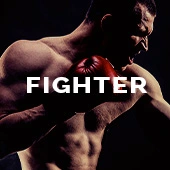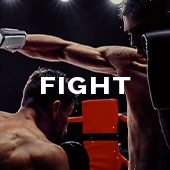Shakur Stevenson is a southpaw. William Zepeda is also a southpaw.
And that’s where the stylistic similarities between the two lightweights meeting this Saturday night end.
Stevenson, the 2016 U.S. Olympic silver medalist, is a pure boxer. He rarely loads up on punches or seeks knockouts. He uses his footwork, his defense, his quick hands, and his masterful sense of distance and angles to pile up 10-9 rounds, often leaving the opponent’s ego more bruised than his body.
Zepeda, whose amateur career in Mexico was not widely documented, is a genuine pressure fighter. He gets up in his opponent’s grill and stays there, he sets CompuBox records, he bangs the body, and he forces more stoppages — 27, among 33 wins — than his middle-of-the-road punching power alone warrants.
Their meeting in the co-feature of a pay-per-view card at Louis Armstrong Stadium in Queens, New York, offers a clash of two extreme opposite styles. This fight will be about imposing will by virtue of imposing style. If the fists are flying and the fighters are on top of one another, that’s good for Zepeda. If there’s space between the combatants and pauses between the punches thrown, that’s good for Stevenson.
Boxer vs. pressure fighter is a classic pugilistic pairing, and the results can be unpredictable. But if boxing history suggests one thing about such matchups, it’s that either side of the equation can prove the opposite side’s worst nightmare.
The most famous example of these styles meeting is also perhaps the most famous example of any two fighters meeting, Muhammad Ali vs. Joe Frazier.
There are asterisks, of course. Frazier was a serious single-shot puncher, which to some disqualifies him from being considered a true pressure fighter. At the same time, though, his bobbing, weaving, and hooking style, chugging ever forward, produced as much pressure as any gloved warrior has ever generated.
And Ali, the ultimate smooth operator in his youth, had slowed down enough by the time of his three fights with Frazier that he had a tendency to mix his famous floating with a fair bit of flat-footed fighting.
All that said, Ali was a reasonable facsimile of a classic boxer and same for Frazier as a pressure fighter, and boy did their styles give each other hell. Neither man could ever get entirely comfortable. Both suffered extraordinary damage across their 41 rounds.
You want a better example of a pure boxer vs. a pure pressure fighter, although at a far lower level of fame than Ali and Frazier? Consider Paulie Malignaggi and Juan Diaz, who met twice in a four-month span in 2009.
Malignaggi will be the first to admit he never had thunder in his fists — and even if he didn’t admit it, 7 KOs in 36 wins admits it for him. So he had to box, box, and box some more.
Diaz couldn’t punch hard either, with just 21 KOs in 42 wins, most of those the result of broken wills and not broken ribs or jaws. And he addressed his power deficit very differently than Malignaggi, blanketing opponents with volume and living up to his “Baby Bull” nickname.
Despite what the judges said in their first fight, the madcap matador’s style largely tamed the Baby Bull over their 24 rounds. This was one case where the boxer befuddled the pressure fighter more than vice-versa.
When Malignaggi was five years older and a half-step slower, however, a prime Shawn Porter showed him what the losing end of the pressure fighter vs. boxer equation feels like, overwhelming and stopping “The Magic Man” in four lopsided rounds.
The man who handed Malignaggi his first loss, Miguel Cotto, secures an unusual place in this discussion, as he had the versatility to play both stylistic roles, depending upon the situation.
Cotto was by no means a pure boxer, but he tried to be the first time he fought Antonio Margarito — a pressure fighter, albeit one with power, and one whose power now gets the ultimate asterisk. Margarito was infamously caught with loaded hand wraps prior to his next fight, casting suspicion on all that came before, especially his 2008 win over Cotto. That said, Cotto played the role of master boxer for half the fight, until Margarito’s … uh, let’s call it “pressure” … got to him.
Later, Cotto became one of several Floyd Mayweather opponents to try to beat the 21st century’s finest pure boxer with relentless pressure. The former “Pretty Boy Floyd” won his fair share of bouts against varying degrees of swarmer — but clearly the pressure-fighting style gave Mayweather more problems than any other.
Cotto brought skillful pressure. So did Jose Luis Castillo in losing one close decision and one controversial decision. Marcos Maidana brought an awkward, brutish pressure that kept the scorecards close twice. And though Mayweather stopped body-banging Ricky Hatton in the 10th round, he knew for sure he’d been in a fight.
Just as the best pound-for-pound boxer of the 21st century had problems with pressure fighters, so too did the best of the 20th century. Though some would say Sugar Ray Robinson had too much pop in his mitts to count as a pure boxer, he was a boxer first — and Gene Fullmer was the exact opposite.
Fullmer officially went 2-1-1 against Robinson from 1957-’61 — aided no doubt by Sugar Ray’s advancing age, but also by the kind of gracelessly suffocating style that great boxers (and once-great boxers) tend to hate.
The younger, welterweight version of Robinson, meanwhile, undoubtedly had his longest nights against Jake LaMotta, a man whose skill was always underrated, but, well, how much of a cutie can you be if they title the movie about you Raging Bull?
The other great Sugar Ray, 1970s and ‘80s icon Ray Leonard, also found a great rival in a pressure fighter who didn’t lack for skill.
Was Roberto Duran a pure pressure fighter? Not quite. Still, he was relentless in his prime, and in his first fight with Leonard, benefited from Sugar Ray going macho rather than relying on his boxing skill. Leonard wouldn’t make the same mistake in their famous “no mas” rematch, boxing so beautifully that a frustrated Duran called his own stoppage.
Like Duran, Julio Cesar Chavez may have had too much technical prowess and too much natural power to count as a pressure fighter. But he was, at the very least, a great fighter who never stopped applying pressure.
When Chavez took on the sharp and speedy boxer Meldrick Taylor, the boxer gave the pressure fighter fits until finally the pressure broke through and forced boxing’s all-time most debated stoppage. When Chavez later faced the era’s most wizard-like practitioner of the Sweet Science, Pernell Whitaker, the boxer gave the pressure fighter fits until the ringside judges said otherwise and ruled a draw.
No discussion of the boxer-vs.-pressure-fighter history would be complete without a mention of the greatest pressure fighter of ‘em all, Henry Armstrong. “Homicide Hank” faced plenty of skilled boxers — including a young Ray Robinson, who beat him 10-round decision.
Other than the original Sugar Ray, maybe the purest boxer Armstrong fought was future junior welterweight champ Tippy Larkin in 1943. Pressure fighting won big that day at Civic Auditorium in San Francisco, with Armstrong scoring a stoppage just one minute and nine seconds into the second round.
There are countless other slightly imperfect examples.
Michael Spinks had too big a punch to be considered a pure boxer, but his battle of future Hall of Famers with Dwight Muhammad Qawi — “The Camden Buzzsaw” — frequently looked the way boxer-vs.-pressure-fighter showdowns are supposed to look (with the boxer narrowly prevailing).
Dictionary-definition pressure fighter Jeff Fenech fought clever boxer-puncher Azumah Nelson three times — the last of those coming after both were in the Hall of Fame. Fittingly for the purposes of this article, they finished 1-1-1 against each other.
The only nickname as common for a pressure fighter as some variation of “Bull” is some variation of “Cyclone,” and “The Clones Cyclone,” Barry McGuigan was nothing if not a pressure fighter. In another meeting of future Hall of Famers, he took the featherweight title in 1985 from Panama’s Eusebio Pedroza, a slick technical boxer who wasn’t afraid to fight dirty.
There was only one future Hall of Famer in the 2005 middleweight fight between Ronald “Winky” Wright and Sam Soliman, but it stands as interesting example of the stylistic matchup because Wright was a great pure southpaw boxer with a unique high-guard, often flat-footed style, and Soliman was as awkward as they come in employing his swarming approach. The Aussie wasn’t on Wright’s level, but the fight was unexpectedly close because of how uncomfortable Soliman’s chaotic pressure made Winky.
Finishing with a more recent example, Stephen Fulton is mostly a boxer and Brandon Figueroa is undoubtedly a pressure fighter. Their first fight, in 2021, saw Figueroa frequently imposing his style but Fulton keeping up with him and winning a disputed decision. In their rematch this February, the pressure fighter did little in the way of imposing and the boxer prevailed much more easily than he did the first time.
What does all of this mean for Stevenson vs. Zepeda on Saturday?
Stevenson is between a 10/1 and 12/1 favorite. He’s too damned skilled for Zepeda. It’s a good lightweight against a great one.
But history tells us not to be surprised if Stevenson hates every second of the experience and if the fight turns out much closer than the odds indicate.
Eric Raskin is a veteran boxing journalist with nearly 30 years of experience covering the sport for such outlets as BoxingScene, ESPN, Grantland, Playboy, and The Ring (where he served as managing editor for seven years). He also co-hosted The HBO Boxing Podcast, Showtime Boxing with Raskin & Mulvaney, The Interim Champion Boxing Podcast with Raskin & Mulvaney, and Ring Theory. He has won three first-place writing awards from the BWAA, for his work with The Ring, Grantland, and HBO. Outside boxing, he is the senior editor of CasinoReports and the author of 2014’s The Moneymaker Effect. He can be reached on X, BlueSky, or LinkedIn, or via email at RaskinBoxing@yahoo.com.


